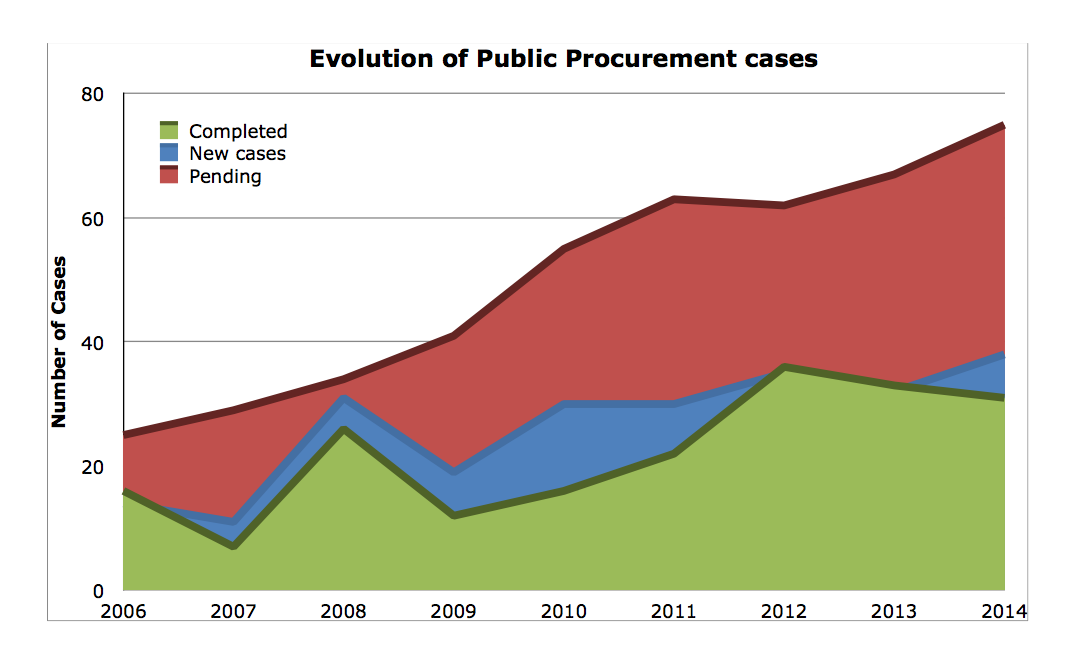Justice delayed is justice denied: the backlog of procurement cases in the CJEU keeps rising
Albert looked into the CJEU's data report for 2014 and compiled a nice graph on the evolution of public procurement litigation at EU level over the last 8 years:

Data compiled by Albert Sanchez-Graells
This graph tells us an important story: the number of public procurement cases brought before the CJEU (General Court and the CJEU itself) is growing, albeit from a small base and very slowly. We are now up to 40 new cases a year which is not a significant amount bearing in mind that the CJEU needs to deal with preliminary rulings and appeals coming from 28 national jurisdictions. But why is are the numbers growing?
The worrying sign however is the increasing backlog of unresolved cases. On average, each new case brought before the Court takes longer to decide than the previous one. As we know, justice delayed, is justice denied. I do not know the average duration of a case (would have to check those manually) but with new Directives coming in roughly every ten years, I would say that there is a risk that an ever growing number of decisions is taken after a new set of rules comes into force. This does not affect the validity of the judgment in itself, but clearly limits the usefulness of case law as a source of law and an aide for interpreting the Directives.
As a background, a few months ago I discussed the issue of the timescales when the CJEU gets involved and an official (who shall remain nameless) told me that the Court has tried over the years to increase the number of judges and Advocate-Generals precisely to reduce the workload and speed up judgments. The problem has been, according to said person, the difficulty in convincing Member States not to have an even number of judges in either Court or finding the budget to double all the numbers.
Any tips or views on this would be most appreciated.